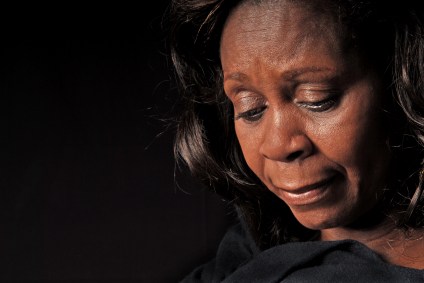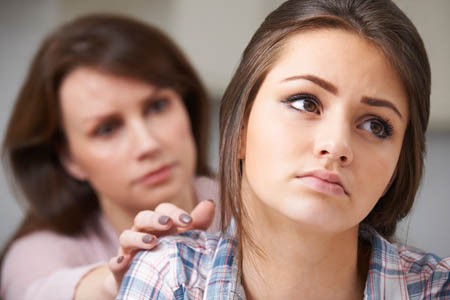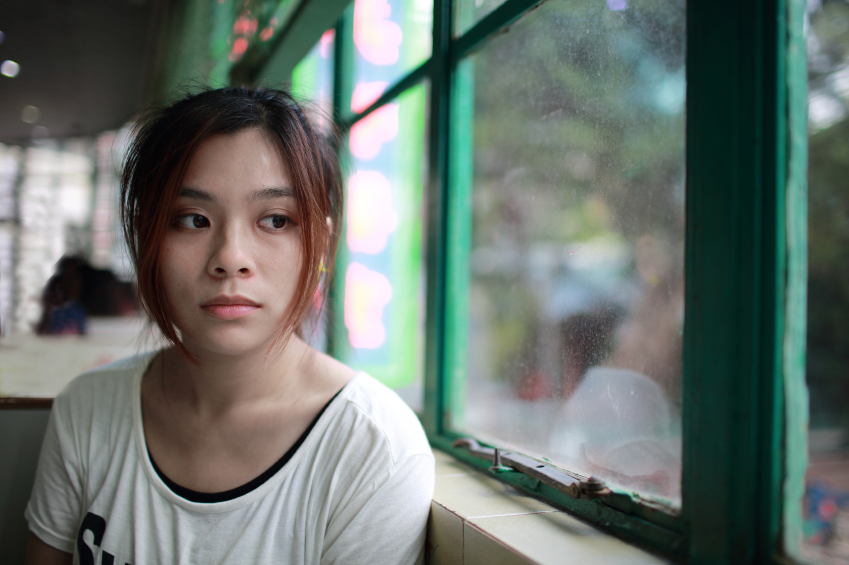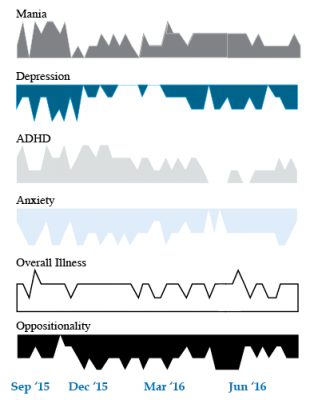A Case Report: Good Effect of Psilocybin Even with No Psychedelic Effects
Highlights from the International Society for Bipolar Disorders Conference Posters and Presentations, Chicago, June 22-25, 2023
Marisa Leon-Carlyle reported on a 43 yr. old man with chronic treatment refractory depression who was given psilocybin 25mg (a 5HT2A agonist) at 8:00 AM after receiving trazodone 200mg HS (which should be enough to block 80% of 5HT2A receptors). He had an excellent antidepressant response, was able to feel emotion and new love for his wife, and finally felt that doing one’s best is good enough. Obviously further systematic study is needed.
Effectiveness of Repeated Ketamine Infusions for Treatment Resistant Bipolar Depression
Highlights from the International Society for Bipolar Disorders Conference Posters and Presentations, Chicago, June 22-25, 2023
Farhan Fancy, of the University of Toronto, gave 66 highly treatment resistant (unselected) bipolar I or II patients four sub-anesthetic doses of IV ketamine (0.5-0.75mg/kg) over a two-week period. They saw significant reductions in depression, anxiety, suicidality, and disability. Response rates were 35% and remission rate was 20%. “Infusions were generally well tolerated with treatment-emergent hypomania observed in only three patients (4.5%) with zero cases of mania or psychosis.”
Intermittent theta burst magnetic stimulation (iTBS) is FDA approved.
As reported in Psych. News:?The Food and Drug Administration (FDA) has cleared the SAINT Neuromodulation System for the treatment of refractory depression in adults, Magnus Medical Inc. (the manufacturer of the product)?announced?Tuesday. SAINT is a?modified form of transcranial magnetic stimulation?(TMS) that compresses weeks of conventional TMS therapy into just five days”. ?Regular TMS takes 20-30 minutes per daily session while iTBS takes about 5 minutes and thus can be applied many times in a single day. ?”As demonstrated in a clinical trial?published?in?The American Journal of Psychiatry, Montgomery-Åsberg Depression Rating Scale (MADRS) scores dropped by 62% among participants following five days of SAINT stimulation compared with a 14% drop among participants receiving sham stimulation. These improvements were sustained over a four-week follow-up.” ?The method was developed by Nolan Williams and he used MRI to best target the site of stimulation
Cariprazine Effective in AD-Resistant MDD
Maletic, V, et al. reported on Efficacy of Adjunctive Cariprazine Across Individual Depressive Symptoms in Major Depressive Disorder: A Post-Hoc Analysis. Poster presented at Psych Congress 2022; September 17-20, 2022.
“With 751 patients (502 on CARIPRAZINE (CAR) and 249 on PBO), the LSMD (95% CI) score change from baseline to week 6 was significant in favor of CAR. Items of the MADRS scale were assessed individually over the course of the study, including apparent sadness, reported sadness, reduced appetite, lassitude, inability to feel, pessimistic thoughts, and suicidal thoughts, showing improvement compared to PBO. “
Accelerated Intermittent Theta-Burst Stimulation (aiTBS) Quickly Improved Treatment-Resistant Depression
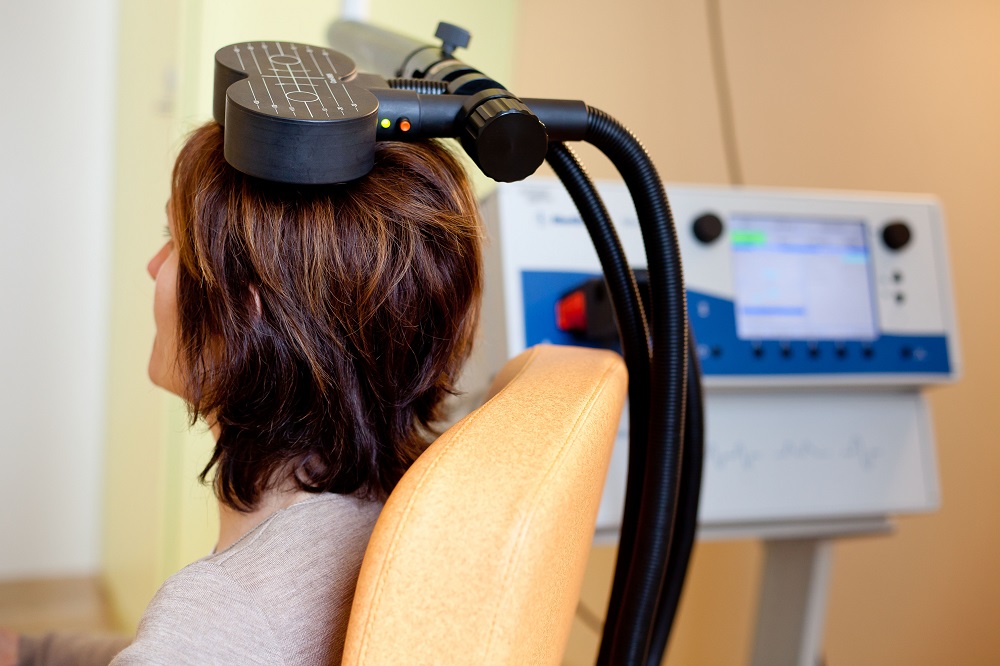
At the 2021 meeting of the Society of Biological Psychiatry (SOBP), researcher Nolan Williams and colleagues described a sham-controlled trial of accelerated intermittent theta-burst stimulation (aiTBS) in patients with treatment-resistant depression. Theta burst stimulation is a specific protocol for rTMS, or repeated transcranial magnetic stimulation, a non-invasive form of brain stimulation. Magnets placed on a patient’s head provide bursts of high-frequency stimulation to the brain.
Participants in the study received 50 sessions over 5 days of either aiTBS or a sham procedure. Among those who received the real aiTBS treatment, 85.7% saw an improvement in their treatment-resistant depression, compared to only 26.7% of those in the sham group. AiTBS produced a rapid antidepressant response, which Williams and colleagues suggest could be useful for the treatment of patients in emergency rooms or inpatient settings.
Childhood Physical Abuse Predicts Response to IV Ketamine
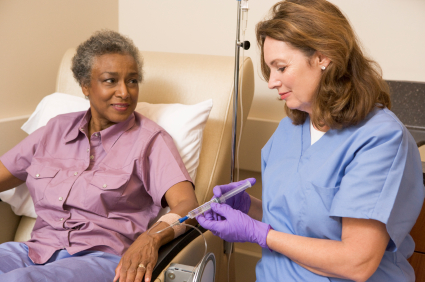
At a recent scientific meeting, researcher Alan Swann reported the results of a study of intravenous ketamine in people with treatment-resistant depression. The 385 participants, who received four infusions of IV ketamine at a dosage of 0.5 mg/kg, could be grouped into three based on their type of response to the treatment.
One group had moderate depression at baseline and showed little change. A second group with severe baseline depression also showed minimal improvement. A third group who also had severe baseline depression had a rapid and robust antidepressant response to the treatment. This group had high scores relating to physical abuse on the Childhood Trauma Questionnaire (CTQ), but did not differ on other clinical variables. Swann and colleagues concluded, “Our outcomes show that IV ketamine should be considered as a primary treatment option for adults presenting with severe, treatment resistant depression and a self-reported history of childhood physical abuse. IV ketamine may not be as effective for moderately depressed individuals irrespective of childhood maltreatment.”
Inflammation is Associated with Antidepressant Treatment Resistance
Researcher Ebrahim Haroon and colleagues report in a 2018 issue of Psychoneuroendocrinology that people whose depression failed to respond to at least three different antidepressants in their current episode of depression had higher levels of inflammation than those who had fewer than three failed antidepressant trials.
The researchers found that patients who had not responded to antidepressants had higher levels of the inflammatory markers TNF-alpha, TNF-alpha receptor 2, and Il-6. The inflammatory marker CRP was also significantly elevated in these patients when statistical analyses that excluded body mass index (BMI) were used.
Haroon and colleagues reported that a third of all patients with major depressive disorder fail to respond to currently available antidepressant treatments, and that inflammation may be to blame because it interferes with the neurotransmitter systems that antidepressants target.
Editor’s Note: These data indirectly support the use of anti-inflammatory drugs to augment the effects of antidepressants in patients with treatment resistant depression. A caution that may be very important is to assess evidence of inflammation at baseline, as some data suggest that people with low CRP may, for example, do more poorly with a blocker of TNF-alpha, while people with high CRP at baseline (over 3 pg/ml) show good improvement.
Pilot Study Finds Intravenous Ketamine Improves Tough-to-Treat Adolescent Depression
A 2018 open study by Kathryn R. Cullen and colleagues in the Journal of Child and Adolescent Psychopharmacology suggests that intravenous ketamine may improve depression in adolescents who have not responded to at least two antidepressants.
Thirteen patients ranging in age from 12 to 18 with treatment-resistant depression were given six ketamine infusions over a period of two weeks, at doses of 0.5 mg/kg of body weight. A 50% drop in scores on the Children’s Depression Rating Scale-Revised (CDRS-R) was considered a good response, and the average drop in participants’ scores was 42.5%. Five of the thirteen participants (38%) met the criteria for a good response. Three of these participants were still in remission at six weeks, while the other two relapsed within two weeks.
Ketamine was fairly well-tolerated by the young participants. Some had temporary dissociative symptoms or blood pressure changes. Higher absolute doses of ketamine were linked to better response.
The response rates in this group were not as good as in some studies of adults. More research using larger sample sizes and placebo controls is needed to optimize dosing and clarify the safety and efficacy of intravenous ketamine in adolescents with tough-to-treat depression, but this is a promising finding in a small number of adolescents.
Sodium Benzoate Helps Treat Schizophrenia When Added to Clozapine
In a 2017 article in the journal Biological Psychiatry, Chieh-Hsin Lin and colleagues reported that sodium benzoate, a common food preservative, may augment the effects of clozapine in patients with schizophrenia.
Clozapine is the most effective antipsychotic available, but as many as 40–70% of patients with treatment-resistant schizophrenia do not respond to it. For those with a poor response to clozapine, sodium benzoate may offer some hope.
In a randomized, double-blind trial, sixty inpatients taking clozapine for schizophrenia were divided into three groups. One group received an additional 1 g/day of sodium benzoate, another received 2 g/day, and the third received placebo in addition to clozapine. Both groups taking sodium benzoate and clozapine showed improvements in negative symptoms of schizophrenia (which can include apathy and inability to experience pleasure) compared to the group taking only clozapine. The larger 2g dose also improved positive symptoms of schizophrenia (such as hallucinations or delusions) and quality of life. Changes in levels of the antioxidant catalase were linked to the total improvement in symptoms and the improvement in positive symptoms. Sodium benzoate did not seem to cause any side effects.
Editor’s Note: Sodium benzoate is a D-amino acid oxidase inhibitor that activates NMDA receptors and increases levels of the amino acid D-serine in the brain by preventing it from breaking down. D-serine can reverse the effects of the illicit drug PCP, and very high doses of D-serine have improved the effectiveness of atypical antipsychotics in people with schizophrenia. By increasing levels of D-serine, sodium benzoate may offer new benefits to people with schizophrenia, especially those who have not responded to other treatments.
Treatment Approaches to Childhood-Onset Treatment-Resistant Bipolar Disorder
Dear readers interested in the treatment of young children with bipolar disorder and multiple other symptoms: In 2017, BNN Editor Robert M. Post and colleagues published an open access paper in the journal The Primary Care Companion for CNS Disorders titled “A Multi-Symptomatic Child: How to Track and Sequence Treatment.” The article describes a single case of childhood-onset bipolar disorder shared with us via our Child Network, a research program in which parents can create weekly ratings of their children’s mood and behavioral symptoms, and share the long-term results in graphic form with their children’s physicians.
Here we summarize potential treatment approaches for this child, which may be of use to other children with similar symptoms.
We present a 9-year-old girl whose symptoms of depression, anxiety, attention-deficit hyperactivity disorder (ADHD), oppositional behavior, and mania were rated on a weekly basis in the Child Network under a protocol approved by the Johns Hopkins School of Medicine Institutional Review Board. The girl, whose symptoms were rated consistently for almost one year, remained inadequately responsive to lithium, risperidone, and several other medications. We describe a range of other treatment options that could be introduced. The references for the suggestions are available in the full manuscript cited above, and many quotes from the original article are reprinted here directly.
As illustrated in the figure below, after many weeks of severe mania, depression, and ADHD, the child initially appeared to improve with the introduction of 4,800 micrograms per day of lithium orotate (a more potent alternative to lithium carbonate that is marketed as a dietary supplement), in combination with 1 mg per day of guanfacine, and 1 mg per day of melatonin.
Despite continued treatment with lithium orotate (up to 9,800 micrograms twice per day), the patient’s oppositional behavior worsened during the period from November 2015 to March 2016, and moderate depression re-emerged in April 2016. Anxiety was also generally less severe from December 2015 to July 2016, and weekly ratings of overall illness remained in the moderate severity range (not illustrated).
In June 2016, the patient began taking risperidone (maximum dose 1.7 mg/day) instead of lithium, and her mania improved from moderate to mild. There was little change in her moderate but fluctuating depression ratings, but her ADHD symptoms got worse.
The patient had been previously diagnosed with bipolar II disorder and anxiety disorders including school phobia, generalized anxiety disorder, and obsessive compulsive disorder.
Given the six weeks of moderate to severe mania that the patient experienced in October and November 2015, she would meet criteria for a diagnosis of bipolar I disorder.
Targeting Symptoms to Achieve Remission
General treatment goals would include: mood stabilization prior to use of ADHD medications, a drug regimen that maximizes tolerability and safety, targeting of residual symptoms with appropriate medications supplemented with nutraceuticals, recognition that complex combination treatment may be necessary, and combined use of medications, family education, and therapy.
Mood Stabilizers and Atypical Antipsychotics to Maximize Antimanic Effects
None of the treatment options in this section are approved by the US Food and Drug Administration for use in children under 10 years of age, so all of the suggestions are “off label.” Further, they may differ from what other investigators in this area of medicine would suggest, especially since evidence-based medicine’s traditional gold standard of randomized placebo-controlled clinical trials is impossible to apply here, given the lack of research in children with bipolar disorder.
As we share in the original article, reintroducing lithium alongside risperidone could be effective, as “combinations were more effective than monotherapy in a study [by] Geller et al. (2012), especially when they involved an atypical antipsychotic such as risperidone. This might include the switch from lithium orotate to lithium carbonate,” the typical treatment for bipolar disorder, on which more research has been done. “Combinations of lithium and valproate were also more effective than either [drug alone]…in the studies of Findling et al. (2006),” and many patients needed stimulants in addition.
“Most children also needed combinations of mood stabilizers (lithium, carbamazepine, valproate) in the study [by] Kowatch et al. (2000).” In a 2017 study by Berk et al. of patients hospitalized for a first mania, randomization to lithium for one year was more effective than quetiapine on almost all outcome measures.
Targeting ADHD
“[The increased] severity of [the child’s] ADHD despite improving mania speaks to the…utility of adding a stimulant to the regimen that already includes…guanfacine,” which is a common non-stimulant treatment for ADHD. “This would be supported by the data of Scheffer et al. (2005) that stimulant augmentation for residual ADHD symptoms does not [worsen] mania, and that the combination of a stimulant and guanfacine may have more favorable effects than stimulants alone.”
However, the consensus in the field is that mood stabilization should be achieved first, before low to moderate (but not high) doses of stimulants are added. “Thus, in the face of an inadequate response to the lithium-risperidone combination in this child, stimulants could be deferred until better mood stabilization was achieved.”
Other Approaches to Mood Stabilization and Anxiety Reduction
“The anticonvulsant mood stabilizers (carbamazepine, lamotrigine, and valproate) each have considerable mood stabilizing and anti-anxiety effects, at least in adults with bipolar disorder. With inadequate mood stabilization of this patient on lithium and risperidone, we would consider the further addition of lamotrigine.
Lamotrigine appears particularly effective in adults with bipolar disorder who have a personal history and a family history of anxiety (as opposed to mood disorders), and it has positive open data in adolescents with bipolar depression and in a controlled study of maintenance (in teenagers 13–17, but not in preteens 10–12) (Findling et al. 2015). With better mood stabilization, anxiety symptoms usually diminish…, and we would pursue these strategies [instead of using] antidepressants for depression and anxiety in young children with bipolar disorder.”
“Carbamazepine appears to be more effective in adults with bipolar who have [no] family history of mood disorders,” unlike lithium, which seems to work better in people who do have a family history of mood disorders.
“While the overall results of oxcarbazepine in childhood mania were negative, they did exceed placebo in the youngest patients (aged 7–12) as opposed to the older adolescents (13–18) (Wagner et al. 2006).
“There are long-acting preparations of both carbamazepine (Equetro) and oxcarbazepine (Oxtellar) that would allow for all nighttime dosing to help with sleep and reduce daytime side effects and sedation. Although data [on] anti-manic and antidepressant effects in adults are stronger for carbamazepine than oxcarbazepine,” there are good reasons to consider oxcarbazepine. First, there is the finding mentioned above that oxcarbazepine worked best in the youngest children. Second, there is a lower incidence of severe white count suppression on oxcarbazepine. Third, it has less of an effect on liver enzymes than carbamazepine. However, low blood sodium levels are more frequent on oxcarbazepine than carbamazepine.

